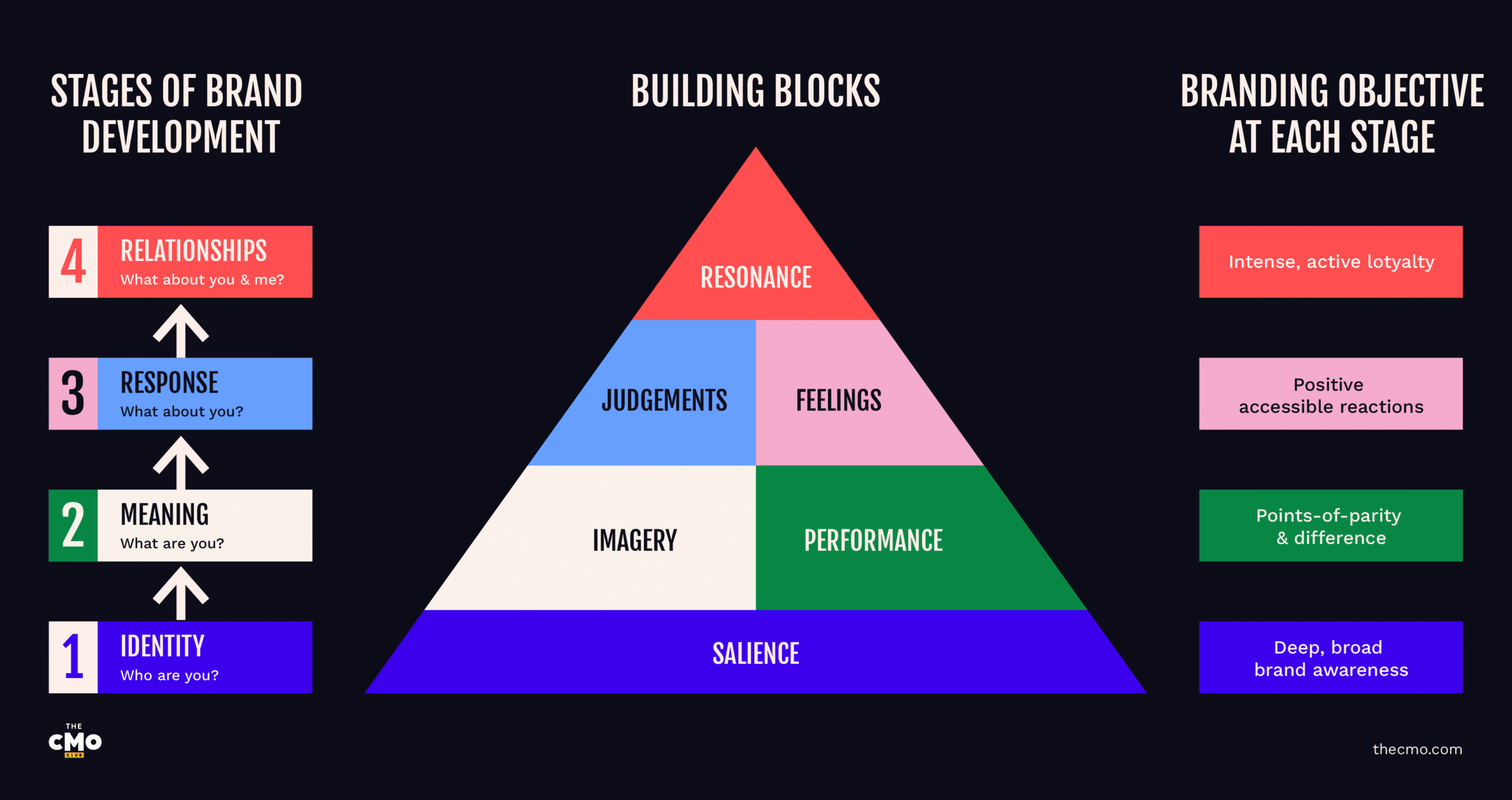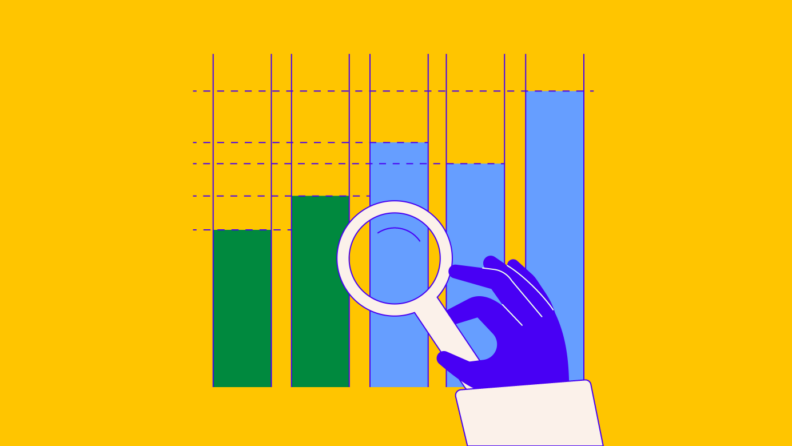Measuring brand awareness is key to a successful brand management approach. But it can be notoriously difficult to measure. Multiple metrics and methods define brand awareness, and it’s not always clear where to start.
Don’t let that deter you. Getting this right is worth the effort. Brand awareness data is valuable for
- Building targeted marketing campaigns
- Evaluating your competitive standing
- And increasing market share.
In this guide, we’ll share actionable steps for measuring brand awareness and the best brand attribution strategies and tools to support the process. Let’s get started!
What Is Brand Awareness?
Brand awareness is a marketing term used to describe the level of familiarity and recall a brand has within its target market. When you associate a logo, slogan, or song with a specific brand, that’s a mark of strong brand awareness.
Google it = Search for it online. Does that ring a bell?
As Stephen Houraghan of Brand Master Academy puts it, “Raising brand awareness is the task of turning a cold audience into a warm audience, in order to put your brand into the mix when it comes to a buying decision.”
This transition from cold lead to warm lead takes many forms, which is why many marketers struggle to measure brand awareness. From social media shares to branded search volume, there’s a wide range of metrics and methods to consider for effective brand awareness measurement, which we’ll examine next.

10 Ways to Measure Brand Awareness
Now that we agree on it's importance, let’s review the best strategies for measuring brand awareness.
1. Branded Search Volume
Branded search volume refers to website traffic from search engines through brand-specific search queries. This is a great metric for gauging brand awareness, as it reveals how often your brand is specifically sought out.
For effective measurement of branded search volume:
- Use an all-in-one analytics tool, such as Semrush, for comprehensive data collection from all search engines. Google Analytics is a strong option for tracking Google-specific search queries, but it can be limited to monitoring search traffic from other sources.
- Be critical of seasonal fluctuations in your search volume. For example, accounting software may experience a spike in searches during tax season.
- Create benchmarks to track branded search volume accurately over time and avoid misinterpreting short-term spikes or dips as long-term trends.
Branded search volume directly measures brand recognition and recall, making it a fantastic indicator of high-intent brand awareness. This data is necessary to track shifts in public interest and build targeted marketing campaigns.
2. Brand Awareness Surveys
Brand awareness surveys involve asking your audience about their knowledge and interpretation of your brand. With a survey, there’s no need to guess what your audience knows or feels – you’ll have clear answers from the source.
When conducting brand awareness surveys:
- Keep survey questions concise yet specific. Avoid vague language and prioritize questions that probe brand recall, association, and sentiment.
- Target a variety of audience segments for a complete picture of brand perception.
- Limit the number of survey questions to boost response rates. Instead, conduct multiple surveys focusing on specific areas like brand recall or recognition for in-depth insights without overwhelming respondents.
Use tools like SurveyMonkey, Google Forms, or FillOut to easily create and distribute brand awareness surveys. These tools improve your ability to monitor and organize responses and can summarize your data into full reports, visual charts, or graphs.
3. Social Listening
Social listening is when you track mentions, hashtags, shares, and comments about your brand across social media platforms and online forums.
When using social listening to measure brand awareness:
- Set up alerts for brand mentions and variations of brand-related terms or misspellings for a more complete view of your brand’s social presence.
- Don’t just measure how often your brand is mentioned, but assess the tone behind the conversation. Analyzing sentiment alongside volume allows you to gauge how your public perception evolves.
- Pay attention to recurring themes and associations. For example, viral trends such as “TikTok made me buy it” can reveal a new demographic discovering your brand or products.
Social listening provides real-time insights into brand awareness, but it is important to use the right tools to identify emerging trends and organize your data. Sprout Social is our top pick for social listening. But before you make your choice, take a minute to review our round-up of the best social media management software.
4. Earned Media Coverage
Earned media coverage is the attention your brand receives through mentions by news outlets, blogs, or other non-paid media. When your brand generates buzz organically, without paid efforts, that's a strong reflection of your brand awareness.
To measure your earned media coverage:
- Track the authority and reach of the publications that mention your brand to assess impact.
- Focus on sentiment analysis to understand how your brand is portrayed in the media. Use this data to gauge whether your brand is viewed in a positive, negative, or neutral light.
- Compare earned media coverage with competitors to see how your brand stacks up in the industry.
Earned media coverage is directly related to your public perception and credibility. To accurately understand your coverage by third parties, use media monitoring software like Meltwater or BuzzSumo to track mentions and analyze the reach of your media exposure.
5. Backlink Profiles
A backlink profile measures the quality and quantity of external links driving traffic to your website. This collection of metrics provides a snapshot of your brand’s standing online, with key insights into authority, credibility, and SEO performance.
To monitor your backlink profile:
- Use SEO tools like Ahrefs or Google Search Console to track and analyze backlinks in real time.
- Analyze key metrics such as domain authority, number of referring domains, and link quality to understand the impact of your backlink profile.
- Focus on high-quality backlinks from sites with strong domain authority, as these are more effective in boosting brand visibility and trust.
Backlinks are like a digital breadcrumb trail, guiding users and search engines to your site. This supports brand discovery and increases brand awareness. To find the best SEO software for your brand awareness strategy, check out our in-depth review of the best SEO tools.
6. Change in Direct Traffic
Direct traffic is the opposite of a backlink. It's the proportion of website visitors who arrive by typing your URL directly into their browser. Site visitors must already know your web address to do this, and this indicates a higher level of brand recall and awareness.
To monitor your site's direct traffic:
- Use Google Analytics or a similar web analytics tool to track changes in direct traffic over time.
- Segment direct traffic by returning visitors vs. new visitors to understand how often visitors recall and use your URL.
- Compare direct traffic trends with the timing of your brand awareness campaigns to identify which initiatives drive the most direct engagement.
Monitoring direct traffic reveals important trends and shifts in audience discovery. To analyze this data more deeply, create benchmarks to evaluate the impact of brand awareness campaigns, product launches, and marketing efforts over time.
7. Referral Traffic
Referral traffic occurs when visitors come to your site from external sources, such as blogs, directories, or social media platforms. To accurately measure this traffic, you’ll need a marketing analytics tool with robust reporting and link-tracking features, including the ability to create unique tracking links.
Other best practices for measuring referral traffic:
- Identify the top referral sources to see which channels drive the most awareness.
- Focus on partnerships or content placements that bring in high-quality referral traffic.
- Track engagement metrics (e.g., time on page, bounce rate) from referral traffic to gauge audience interest.
Referral traffic is a sign that people discover your brand through other sources, which tells a story of other channels your brand is showing up in and resonating.
8. Social Share of Voice
Social share of voice (SOV) measures how often your brand is discussed on social media platforms compared to your competitors. It tracks mentions, hashtags, and engagement across social platforms, giving insight into your brand's visibility, influence, and overall market presence.
To effectively measure your social share of voice:
- Use tools like Sprout Social or Hootsuite to monitor key SOV metrics such as brand mentions, industry hashtags, and engagement and automatically calculate your social media market share.
- Track SOV over consistent periods (e.g., weekly or monthly) to monitor trends, brand mentions, and engagement spikes.
- Monitor your SOV across multiple social media platforms, as different platforms have different user behaviours.
SOV is a key metric for measuring the performance of your social media marketing strategy and brand awareness efforts. The higher your social share of voice, the stronger your online competitive standing, leading to enhanced brand awareness.
9. Changes in Google Trends Data
Google Trends tracks the popularity of search terms over time. Monitoring how often your brand or related keywords are searched can provide valuable insights into shifts in brand awareness.
Best practices for monitoring Google Trends data:
- Monitor branded search terms, such as products or brand name variations, to see how often people search for you. Look for increases and decreases in search volume over time.
- Track competitors' brand keywords and related search queries alongside your own to spot marketing opportunities, like a spike in searches for alternatives to your competitor.
- Supplement your analysis with other SEO tools, such as SEMRush, for a more comprehensive view of search volumes, keyword performance, and competitive analysis.
Google Trends provides real-time insights into public interest and awareness. By tracking and comparing search trends against competitors, you can refine your digital marketing strategy and improve brand awareness where needed most.
10. Content Marketing Performance
Your content marketing performance assesses how well your branded content, such as company blogs or webinars, resonates and engages your target audience. When you measure the performance of the content assets you create, you're able to understand how your content impacts traffic, leads, or conversions.
Best practices for measuring content marketing performance:
- Use Google Analytics or similar tools to track the traffic your content generates and how that traffic converts into leads or customers. Higher traffic often correlates with increased brand awareness.
- Analyze your content reach and impressions to understand how many people are exposed to your brand.
- Track your performance across all channels, including emails, social media, and company websites, to get a comprehensive view of how your content contributes to brand awareness.
Content marketing performance is crucial to how well your brand resonates with your audience. If you’re serious about creating content marketing campaigns that drive brand awareness, leads, and revenue, review our list of the best content marketing platforms.
10 Brand Awareness Metrics And KPIs
Now, let’s take a closer look at the specific metrics and KPIs that can be used to measure brand awareness. The following metrics will help you assess the visibility, engagement, and overall impact of your brand:
- Net Sentiment Score: This measures the ratio of positive to negative mentions of your brand across social media, forums, and review sites. A high net sentiment indicates positive brand perception and awareness. Use social listening tools, like Sprout Social, to gather and analyze sentiment data.
- Conversions: This metric tracks how many users complete a desired action, such as purchasing or requesting a demo. Strong conversion rates reflect that your brand awareness efforts are paying off and driving action. Marketing automation software, such as Hubspot, can help track conversions.
- Social Media Engagement: This refers to the number of likes, comments, shares, or interactions your social media content generates. High social engagement indicates that your audience has not only seen your content but also interacted with it. Use social media management software, such as Hootsuite or Sprinklr, or built-in analytics features on social media platforms to monitor engagement.
- Impressions: This metric measures how often your audience displays or sees your content. It helps you understand your overall reach across different platforms. Impressions can be monitored through marketing automation tools or ad networks, like Facebook Ads.
- Shares: This measure measures how often users share your content with others. It’s a strong reflection of brand resonance, meaning your audience finds your content valuable enough to promote to their network. Tools like Buzzsumo or built-in analytics tools on social media platforms are best for monitoring shares.
- Click-Through Rates (CTR): CTR measures the percentage of users who click on your content, ads, or email links after seeing them. A high CTR suggests that your messaging and creative content are strong enough to capture attention and drive traffic. Google Analytics, email marketing platforms, and advertising platforms like Facebook Ads track CTR automatically.
- Time Spent on Page: This metric tracks how long users stay on your web pages. The longer time spent indicates that users find your content engaging and relevant, boosting brand awareness and recall. Google Analytics is best for tracking website analytics like this. Go to “Behavior” > “Site Content” > “All Pages” and look at the “Avg. Time on Page” column.
- Unique Views: Unique views represent the number of visitors to your website. A higher number of unique views shows that your brand is reaching a wider audience, contributing to greater brand awareness. Inside Google Analytics, go to “Audience” > “Overview” > “Users” to track unique views.
- Return Visitors: Return visitors measure how often people return to your website after an initial visit. A high rate of return visitors suggests that your brand is leaving a lasting impression and fostering ongoing engagement. Inside Google Analytics, go to “Audience” > “Behavior” > “New vs. Returning” and look under the “Returning” column for data on return visitors.
- Traffic Sessions: Traffic sessions measure the total number of visits to your website, regardless of whether they are unique visitors or returning users. An increase in traffic sessions indicates growing interest and awareness of your brand. Inside Google Analytics, head to “Audience” > “Users” to see the total number of visitors.
Your Next Step: Refine Your Brand Awareness Strategy!
Measuring brand awareness is essential for understanding your brand’s impact and driving growth. As we’ve covered, tracking key metrics like branded search volume, social engagement, and referral traffic provides a deeper insight into your brand’s visibility and audience connection.
By consistently measuring and refining your approach, you’ll grow your brand’s awareness and inspire your team to create campaigns that leave a lasting impact. Now that you have the steps, it’s time to implement them and elevate your brand awareness strategy.e to subscribe to our newsletter for marketing leaders.
Brand Awareness FAQs
How is brand awareness calculated?
Brand awareness is calculated using various metrics, such as branded search volume, social media engagement, direct traffic, and survey responses. Tools like Google Analytics, Sprout Social, and Google Trends help track these metrics to determine how familiar your target audience is with your brand.
What is the KPI for brand awareness?
There is no singular KPI for brand awareness, but rather a collection of them. Key performance indicators (KPIs) for brand awareness include impressions, social engagement, click-through rates, and net sentiment score. These KPIs reflect how well your brand is recognized and discussed across different platforms.
How can brand awareness be assessed?
Brand awareness can be assessed by tracking both quantitative and qualitative metrics. Quantitative data includes website traffic, search volume, and social media mentions, while qualitative insights come from surveys, customer feedback, and sentiment analysis.
How to measure your level of brand awareness?
To measure brand awareness, use a combination of tools and methods, such as social listening, Google Analytics for tracking traffic, and surveys, to gauge how familiar your audience is with your brand. Monitoring how often people search for, mention, and engage with your brand provides a clear picture of awareness.
Who measures brand awareness?
Brand awareness is typically measured by digital marketing managers, marketing teams, brand managers, and digital analysts. These teams use various tools and metrics to monitor and analyze the effectiveness of brand awareness campaigns and make data-driven decisions for future strategies.
Join For More Marketing Insights
Ready to grow? Subscribe to The CMO newsletter to stay on top of trends and get the latest tips, resources, and guides from our community of seasoned marketing leaders straight to your inbox.




